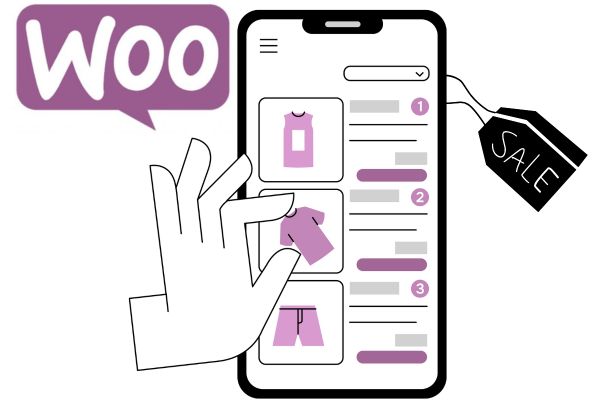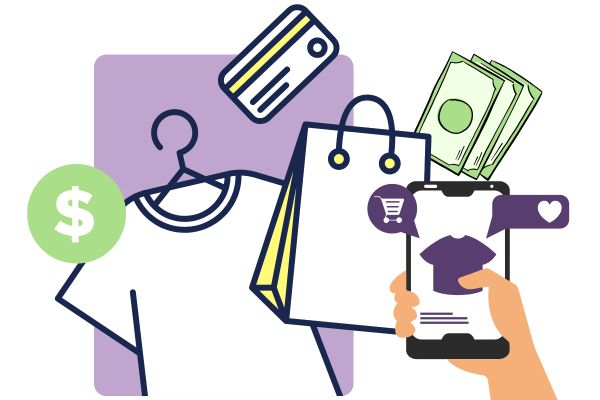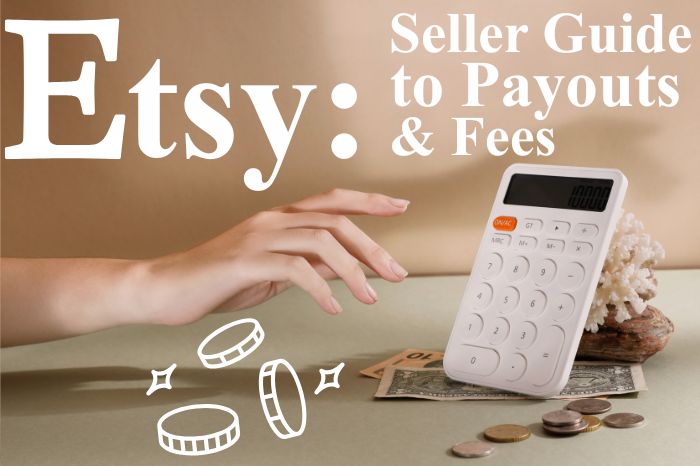Thinking about starting an Etsy Print on Demand business, but not sure if it’s worth it? You’re not alone. Etsy is one of the biggest marketplaces for creatives, and when you combine it with print-on-demand (POD), you get the chance to sell custom products without the hassle of inventory or shipping.
In this post, we’ll break down whether Etsy Print on Demand is really worth your time, the pros and cons you should know before diving in, and how to actually get started. I’ll also share some of the best print on demand sites for Etsy integration, so you can pick the right partner to grow your shop with confidence.
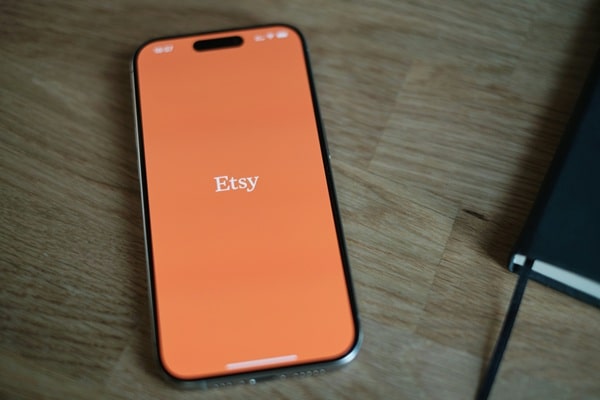
See also: Best Creative Business Ideas in 2025: Earn Money Online
What is POD Etsy integration?
At its core, Etsy is a marketplace where people shop for unique, creative, and custom-made products. A POD provider (print on demand) like Printful or Printify takes care of printing and shipping your designs on products such as shirts, mugs, or posters. POD Etsy integration simply means connecting your Etsy shop directly to a POD service.
This way, when a customer places an order on Etsy, it’s automatically sent to your provider, who fulfills it on your behalf. The integration keeps everything synced – inventory, orders, and tracking – so you can focus on designing and marketing your Etsy print on demand business.
Read also: Why Custom Car Accessories Are a Profitable Niche in Print on Demand
How much does Etsy cost?
Selling on Etsy isn’t free, but costs are fairly straightforward. You’ll pay a $0.20 listing fee for each item, plus a 6.5% transaction fee on every sale. Payment processing fees vary by country (usually around 3–4% + a small flat fee). If you run ads, those are additional. While these fees can add up, they can be balanced by Etsy’s massive audience, making it a worthwhile platform for many Etsy print on demand business owners.
Etsy Print on Demand: The Pros
One of the biggest questions new sellers ask is whether combining Etsy with print on demand is actually worth it. The truth is, this business model comes with several strong advantages that make it appealing for creative entrepreneurs.
From low startup costs to built-in automation, here are 9 of the top benefits of running an Etsy print on demand business:
1. Etsy print on demand has low startup costs
Unlike traditional e-commerce, POD on Etsy doesn’t require buying bulk inventory or investing in expensive equipment. You only pay your POD provider once a customer orders, keeping upfront risk close to zero. This makes it an ideal entry point for anyone testing the waters of online business without draining their savings.
Related: Easy Beginner-Friendly e-Commerce Platforms for Side Hustle in 2025
2. Etsy print on demand gives you access to Etsy’s huge audience
Etsy has millions of active buyers who are already searching for unique, personalized products. By tapping into this marketplace, your designs get exposure right where your ideal customers are shopping. You don’t need to build an audience from scratch – the platform’s traffic can put your products in front of buyers faster.
3. Seamless POD Etsy Integration
Services like Printful and Printify offer smooth Etsy POD integration, meaning your listings, orders, and tracking are automatically synced. This automation saves hours of manual work and reduces human error. Instead of worrying about fulfillment, you can focus on creating designs, improving listings, and marketing your shop to attract more customers.
4. Wide range of products
With POD providers, you’re not limited to just t-shirts. You can sell mugs, tote bags, posters, hoodies, phone cases, and more. You can even start your own print-on-demand clothing brand. The broad catalog allows you to test multiple niches, experiment with trending items, and expand your product line without incurring storage or production challenges.
5. Etsy print on demand gives you creative freedom
POD lets you transform your ideas into sellable products. You’re free to design around your passions, experiment with different styles, and offer personalization. This flexibility means your shop can stand out in a crowded marketplace, while giving you the satisfaction of building a brand that truly reflects your creativity.
6. Scalable business model
Since your POD provider handles production and shipping, scaling up is simple. You can add more designs and products to your Etsy store without worrying about storage, packaging, or fulfillment bottlenecks. Growth depends more on your creativity and marketing than on logistical limitations.
7. Minimal logistics hassle
Running an Etsy print on demand business eliminates the usual headaches of e-commerce. No packing orders, no trips to the post office, and no dealing with bulk suppliers. Once your listings are live, fulfillment is almost entirely hands-off, allowing you to run your store from anywhere with an internet connection.
8. Lower risk of unsold inventory
With POD, you’re not stuck with unsold stock. Every item is made-to-order, meaning you don’t have shelves full of unsold products eating into your budget. This flexibility allows you to test new designs quickly, remove poor performers, and keep your shop fresh without financial risk.
9. Opportunity to build a brand
While POD products may seem generic at first, Etsy gives you the chance to build a recognizable brand. Through cohesive designs, polished listings, great customer service, and smart marketing, you can establish a reputation. Over time, your Etsy shop can become more than just a storefront – it can grow into a lasting business.
Etsy Print on Demand: The Cons
While Etsy POD has some great benefits, it’s not all smooth sailing. There are challenges every seller should be aware of before jumping in.
From slim profit margins to quality control issues, here are some of the biggest downsides to running an Etsy print on demand business.
1. Etsy print on demand comes with high competition
Etsy is a popular marketplace, which means you’ll be competing with thousands of other POD sellers. Standing out requires strong branding, solid SEO, and a clear niche. Without these, your products can easily get buried under endless search results, making it harder to land consistent sales.
2. Lower profit margins
Since POD providers charge a base cost for printing and shipping (that you only pay when you’ve made a sale – so no upfront costs!), profit per item is usually lower than for handmade or bulk-produced products. You’ll need to price carefully to cover Etsy fees and still make money, which can feel limiting compared to other e-commerce models, such as starting a POD business on your own online store – that could only cost you as little as $2.95/mo (Ecwid store) or $16.95/mo (WooCommerce) without extra fees per sale.
Read next: WooCommerce Pricing Plans: What You Need to Know Before Choosing
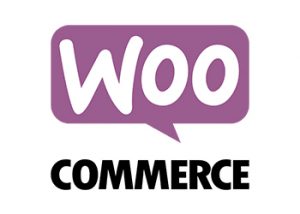
Launch Your Online Store with WooCommerce
Build your store with WooCommerce, the #1 eCommerce plugin for WordPress. Free to start (you only pay for hosting), scalable with extensions, and perfect for selling physical or digital products directly from home.
Get Started with WooCommerce
3. Etsy fees add up
Between listing fees, transaction fees, and payment processing fees, Etsy takes a noticeable cut of each sale. While the exposure is valuable, these costs can quickly reduce your overall profit – especially if you’re pricing too close to the POD base cost.
4. Limited control over production
You’re relying entirely on your POD provider to print, package, and ship products. If they run into delays or stock shortages, your customers feel the impact – not the provider. This lack of control can sometimes lead to negative reviews that are outside your hands.
5. Quality risks without testing
Not all POD products are created equal. If you don’t order samples, you risk selling items with cheap materials, poor printing, or inconsistent sizing. Testing products costs money upfront, but skipping this step can result in unhappy buyers. Always check reviews from other sellers before choosing a product.
6. Shipping times can vary
Etsy buyers often expect quick delivery, but POD fulfillment times can be slower – especially during busy seasons or for international orders. Since you can’t directly control shipping, you’ll need to manage customer expectations clearly in your listings.
7. Less “handmade” appeal
Etsy shoppers love the platform for handmade and unique items. Some customers may view POD as less authentic, especially if your products don’t feel personalized. Without a strong brand story, POD items can come across as generic in Etsy’s creative-driven marketplace.
8. Dependence on a third party
Your entire store depends on your POD provider functioning smoothly. If their integration fails, products go out of stock, or they increase prices, your shop will feel the effects immediately. This reliance means less flexibility compared to running production yourself.
9. Success takes time and marketing
POD on Etsy isn’t a “set it and forget it” business. Simply uploading designs won’t guarantee sales. Success often requires ongoing promotion through social media, Etsy ads, or email marketing. Without consistent effort, your shop may struggle to gain traction in such a crowded marketplace.
Best Print on Demand for Etsy
Worried about inventory risk or finding suppliers? Print-on-demand can be your launchpad.
If you’re starting an Etsy shop and want to sell custom products without the stress of managing inventory or shipping, print-on-demand (POD) platforms can be your best friends. POD lets you create and sell everything from t-shirts and hoodies to mugs and posters, all custom-designed and fulfilled automatically. But not all POD services are created equal – so which are the best for Etsy sellers? Here’s a quick snapshot:
- Printful
- Printify
- Gelato
Let’s take a closer look at each platform to see what makes them stand out for Etsy print on demand.
Printful
Printful is widely recognized as one of the top print-on-demand services for Etsy, valued for its quality and reliability. Integrating Printful with your Etsy shop is straightforward, and the platform supports a wide range of products, including apparel, accessories, and home decor. One of Printful’s standout features is its attention to print quality and branding, helping your small business feel truly professional from day one.
Pros:
- Excellent Product Quality: Consistent, high-quality prints and materials.
- Branding Options: Custom labels, packing slips, and packaging help build your brand.
- Seamless Etsy Integration: Automated order processing and reliable syncing.
- Global Fulfillment: Warehouses in the US, Europe, and beyond mean faster shipping worldwide.
Cons:
- Higher Base Prices: You might see slimmer profit margins compared to some alternatives.
- Shipping Costs: International shipping fees can be on the higher side.
Ideal for Etsy sellers who value brand reputation and want a smooth, reliable experience, even if it comes at a slightly higher cost.
Printify
Printify is especially popular among Etsy entrepreneurs looking for flexibility and a broad selection of products. The key difference? Printify partners with a wide network of print providers, so you can choose printers based on price, location, and even specific product quality – making it a strong option for scaling your store or targeting different markets.
Pros:
- Large Catalog: Huge variety of items, from classic apparel to unique gifts.
- Competitive Pricing: Generally lower base costs, making higher profit margins achievable.
- Multiple Suppliers: Pick and switch between print providers to optimize fulfillment speed or cost.
- Bulk Order-Friendly: Convenient for sellers planning to grow or scale up.
Cons:
- Print Quality May Vary: Because providers are independent, results and fulfillment times can differ.
- Limited Branding Tools: Fewer built-in options for custom packaging or inserts.
- Best if you want variety, flexibility, and the ability to experiment with different suppliers, but be sure to sample products for quality assurance before launching.
Gelato
Gelato is gaining traction fast, especially among sellers who care about sustainability and fast, efficient shipping. The platform connects you to a worldwide network of local print partners – so your Etsy customers get their orders quickly, and carbon emissions stay lower. While Gelato’s product range isn’t as deep as Printful’s or Printify’s yet, its global reach and eco-friendly ethos make it a noteworthy contender.
Pros:
- Local Production: Products are printed close to your customer, speeding up shipping.
- Eco-Friendly Approach: Lower carbon footprint thanks to decentralized fulfillment.
- Simple Etsy Setup: Integration is quick and user-friendly.
Cons:
- Smaller Product Selection: Slightly less variety compared to competitors, especially for more niche items.
- Branding Limitations: Customization for packaging and inserts is limited at present.
- Perfect for Etsy shop owners who prioritize fast delivery and an environmentally-minded brand message.
No matter which platform you choose – Printful, Printify, or Gelato – each offers unique benefits for running a successful Etsy print on demand business. Consider your brand values, target audience, and growth goals to pick the service that fits your shop’s vision.
How to Start: Etsy Print on Demand Step-by-Step Guide
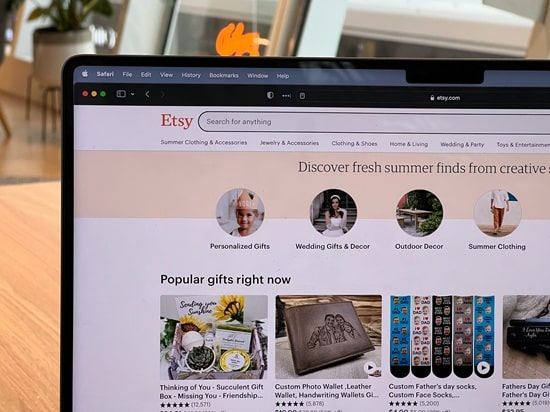
Getting started with an Etsy print on demand business is simpler than you might think – but success comes from doing it strategically. Here’s a clear step-by-step roadmap to help you launch with confidence.
Set up your Etsy shop
First, create your Etsy account and set up your shop. Pick a name that reflects your niche and make sure to fill out all details, including shop policies, banner, and profile image. Remember, your storefront is the first impression buyers get. Etsy charges a small listing fee ($0.20 per item), so plan accordingly as you add products.
Choose your niche and audience
A successful POD Etsy integration starts with focus. Instead of trying to sell to everyone, choose a niche like pet lovers, bookworms, or fitness enthusiasts. This makes your designs more appealing to the right people and helps your listings show up in searches. The clearer your audience, the easier it is to market effectively.
Create unique designs
This is where creativity pays off. Use tools like Canva, Adobe Photoshop, or Illustrator to design artwork that’s original and aligned with your niche. Simple but clever designs often sell best. Don’t forget to research current Etsy trends for inspiration – but always add your own twist. Your design is what sets your Etsy print on demand business apart from competitors.
Make sure your designs are good quality and 300 DPI
When creating artwork for your Etsy print on demand business, always use high-resolution files (at least 300 DPI). Low-quality designs often print blurry or pixelated, which can lead to disappointed customers and costly returns. Make sure your files are sized correctly for the product and use transparent PNGs when needed. Testing with samples is smart, too – it helps you confirm colors, sharpness, and overall print quality before you launch a product live.
Upload products to a POD provider
Once your designs are ready, upload them to a POD service like Printful, Printify, or Gelato. Thanks to POD Etsy integration, your products sync directly with your Etsy shop. When a customer orders, your provider handles printing and shipping automatically. Make sure to choose products with good reviews, or order samples first to confirm quality before going live.
Calculate pricing properly
Pricing on Etsy takes strategy. You’ll need to factor in POD base costs, Etsy’s payment processing fees, transactions, and listings. On top of that, leave room for profit. If a mug costs $8 to produce and fees take another $3, pricing it at $18–20 gives you enough margin while staying competitive. Don’t undervalue your work.
Optimize your Etsy listings
Good Etsy SEO is key to visibility. Use your main keyword, like Etsy print on demand, naturally in your titles, tags, and descriptions. Add strong product photos or mockups to grab attention. The more descriptive and keyword-rich your listing, the better chance you have of ranking in Etsy search results and converting browsers into buyers.
Market your shop effectively
Don’t rely only on Etsy traffic. Promote your store with social media, Pinterest, YouTube SEO, and email marketing. For a long-term boost, start a blog with DreamHost and drive free traffic through SEO – blog posts can bring in customers consistently. Marketing is the engine that fuels your shop’s growth, so plan to invest time here.
Deliver excellent customer service
Etsy values great customer experiences, and so do buyers. Respond to messages quickly, keep customers updated on orders, and resolve any issues politely. Positive reviews build trust and boost your shop ranking. Since POD fulfillment is handled externally, customer service is your chance to shine and make your brand memorable.
Test, analyze, and scale
Once sales start coming in, track what’s working. Which designs sell best? Which keywords drive traffic? Double down on winners and retire underperformers. Scaling is easier with POD – add new products, expand your catalog, and even test different POD providers like Printful vs. Printify. Over time, you’ll refine your process and grow steadily.
Etsy print on demand is not the only way to sell POD products
Etsy is a fantastic platform for many sellers, and plenty of entrepreneurs build thriving Etsy print on demand businesses there. But some prefer more control over their brand – and that’s where running your own online store comes in.
One big limitation on Etsy is that collecting email addresses from buyers is tricky. Since Etsy controls the customer relationship, you don’t get direct access to your buyers’ emails. That makes it harder to build long-term customer loyalty – even though repeat customers are almost always more profitable than finding a brand-new buyer.
If you want ownership of your customer list and more flexibility, starting your own WooCommerce store might be the smarter path. Plans start at just $16.95/month, and you’ll also get a professional email account included. That means you can collect emails, run promotions, and do proper email marketing – one of the most effective ways to grow repeat sales.
Of course, having your own online store comes with its own pros and cons. Unlike Etsy, you won’t benefit from a built-in marketplace. You’ll need to drive traffic through social media, blogging, or other marketing strategies. But if you’re ready to take control of your brand and build a more independent business, WooCommerce could be the right next step.

Launch Your Online Store with WooCommerce
Build your store with WooCommerce, the #1 eCommerce plugin for WordPress. Free to start (you only pay for hosting), scalable with extensions, and perfect for selling physical or digital products directly from home.
Get Started with WooCommerceFAQs
Is it worth selling print-on-demand on Etsy?
Yes, if you target a clear niche, create standout designs, and promote effectively. POD reduces upfront costs and simplifies fulfillment, but success depends on marketing, product differentiation, and margin management.
Is print-on-demand allowed at Etsy?
Yes—Etsy allows POD. You must follow Etsy’s policies, disclose production partners in shop policies if asked, and ensure listings accurately represent the product and who made it.
What is the best print-on-demand for Etsy?
“Best” depends on needs: Printful for quality and integration, Printify for pricing variety, Gelato for global printing. Test providers for cost, product range, and shipping reliability to choose the right fit.
Is it worth selling print-on-demand on Etsy?
If you value low risk and want to focus on design and marketing, yes. But be realistic about competition, fees, and the need for strong branding to stand out on Etsy.
Is Etsy print on demand profitable?
It can be profitable with the right niche, pricing, and volume. Profitability hinges on controlling POD base costs, factoring Etsy fees, and driving targeted traffic through SEO and marketing.
Can I connect Printify to Etsy?
Yes—Printify supports Etsy integration. After connecting, products and orders can sync automatically, but always verify settings, mockups, and shipping regions before listing live items.
Is print-on-demand or dropshipping better?
POD is better for custom designs and branding with low inventory risk. Dropshipping fits a wider product range but often offers less control over branding and quality. Choose by control vs catalog needs.
Can you make $10,000 a month on Etsy?
Yes, some sellers reach $10k/month, but it requires strong product-market fit, consistent marketing, repeat customers, and often multiple bestsellers—not typical for beginners overnight.
Why are so many sellers leaving Etsy?
Sellers cite rising fees, algorithm changes, increased competition, and policy shifts. Many look for alternatives or diversify channels to protect margins and traffic sources.
How profitable is selling prints on Etsy?
Profitability for prints depends on production cost, pricing, and perceived value. Low-cost prints can sell volume, but higher-margin, unique art prints often yield better profitability per sale.
Is it hard to sell prints on Etsy?
Selling prints is competitive but doable. Success requires clear branding, SEO-optimized listings, quality mockups, targeted promotion, and patience to build reviews and visibility.
Conclusion
Etsy Print on Demand can be a great way to start selling custom products without upfront costs – but it’s not the only option. Whether you stick with Etsy’s marketplace or branch out with your own WooCommerce store, the key is choosing the path that fits your goals and gives you the control you want over your POD business.
Ready to start? Test your first product today with Printful or Printify and see what works best for you!
Read next: How to Create an eCommerce Website: Step-by-Step Guide for Beginners



